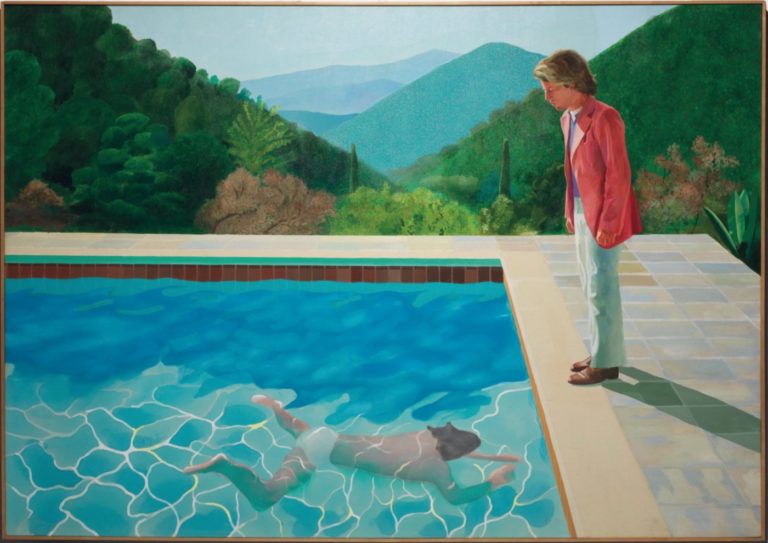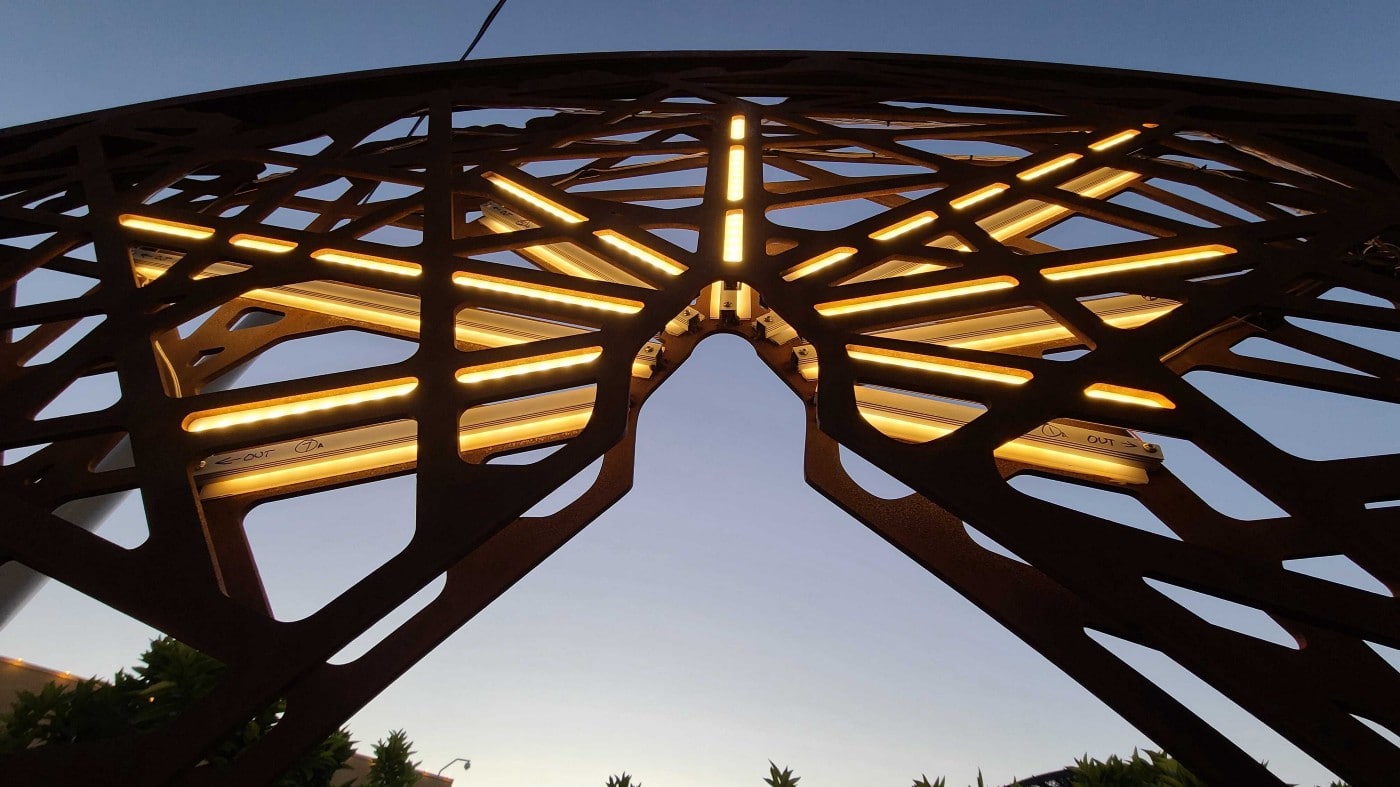
This article is the latest in AR Insider’s editorial contributor program. Find out more or contact us to participate here. Authors’ opinions are their own.
On Art & Reality
by Chris Nunes
Fluidity. Turbidity. Evolution.
Stagnancy. Immobility. Death.
Which do you associate with art?
Good Art is the vanguard of cultural (r)evolution, moving around and over conservative bulwarks in a way that is fluid, rapid, dizzying. As time marches on, culture shifts — it bends — through time like a river of collective taste, fashion, aesthetics, cutting down and through the bedrock of staid everyday living. Sometimes art can be an installation of a memory, serving to put its shoulder against the river’s flow and resist that change, to make its own stand against the effluent. But installing conservative art that is backwards looking in nostalgic romanticism does NOT create classical masterpieces — you don’t create award-winning material by trying to recreate other winning pieces. “Classics” are created across the zeitgeist of many moments, and reach classic status only later as the impact of that work emerges in the world, rising slow-motion like a supermodel with slicked-back hair out of a pristine summer pool, and it is the passage of time that bleeds details from our recollection of that raging cultural river until it becomes a hazy yet perfect [Pool with Two Figures] that could even permit perfectly coiffed hair on its strident mermaids. Genius emerges — there is no “instant Classic” — but it emerges from the turbidity of the constant innovation of the art world.

Art is about exploration, discovery, awe — the endorphin rush of surprise. Real art is risk. It is vision. It is an understanding of Reality that establishes new sightlines and guideposts into a new Space. And it is memorable, like a trauma, because that is when our new view of the World supplants the old one that we can never return to, making us an orphan to that old Reality, but a proud and bold explorer in the New.
Art as Precursor to Memory and Dialectics
But let’s turn to “memory” for a second. John O’Keefe won the Nobel Prize in 2014 in medicine for establishing that the hippocampus in the brain is the situs of BOTH (a) our understanding of space — of place — AND (b) memories. Our relation to our space helps us form memories. When you combine place with genius art — with discovery, surprise, delight — that experience creates the best kind of memories. Indelible on the space as physical graffiti, and indelible on the audience’s perception of Reality as psychological evolution.
Part II
“Reality is our canvas; digital is our brush.”
This is a new mantra we’re trying on for our team. What does it mean?
In the mixed reality (“MR”) art world, we see “reality” as a spectrum. But this is not “reality” in the psychic, mind-bending-substance kind of spectrum that separates sanity from insanity. Rather, the MR spectrum was first outlined academically by Paul Milgram as the “Reality-Virtuality Continuum.” One far edge of the spectrum described Descartes’ IRL (In Real Life )Reality: blood-and-meat space; analog; Biblical times. The other end of the spectrum described the purely digital built environment that replaces everything you see, hear taste, etc.; VR headsets; virtual worlds; the Matrix Reality.

In between exists Augmented Reality, where our view of the IRL is modified, added to, augmented, by digital artifacts. This can be on mobile phones, looking through the camera as if you were video recording the world, and seeing (in near-real-time, 60 fps) new digital creatures, new pathways, new people even, appearing in your view of meatspace and maybe even interacting with the IRL objects like trees, chairs, or doorways. In the near future, this “performance” happens on AR glasses so that our fatiguing and waning arm muscles don’t get stressed by the ever smaller and thinner mobile devices we call our personal assistants, née iPhones.
“Reality as canvas”
Using Augmented Reality technologies, we superimpose digital constructs into a particular view of the IRL World. Reality is the stage upon which we draw our scene. It is the canvas on which we draw our pixels.
Typically, this is done in specific locations. For instance, in an upcoming launch with JW Marriott in Anaheim California, we have built 3 steel sculptures and installed them on the West Garden Deck of the hotel. The 3 sculptures represent the 3 stages of the life of a plant — seed, sapling, tree. You need not be a guest of the hotel to experience the performance — if in the area, please visit and look for our installation Shimé. But remember, the sculptures are just Phase 1 (the built artifacts) of this experience.

Using the dedicated Shimé mobile app on your iPhone, if you point your camera at the sculptures, previously static and rigid steel becomes fluid moving flora. In each of the 3 stages of the narrative, the audience member can interact with the digital experience to ultimately create their own unique digital tree to live amongst the garden. And as long as the guest returns over time to nurture their tree (by performing their unique meditation), their tree will continue to grow there. This is all done digitally, superimposed on the guest’s view of our sculptures through their phone’s camera. This is Phase 2 of our experience — the interactions by the audience to generate new art that is dynamic, evolving over time as more people contribute their digital trees to our digital forest.
Phase 3 is when the guest discovers that by interacting with the art — by generating their own personal digital tree to live on the JW Marriott deck — they have actually participated in a performative meditation. KARMA SEED requires calm focus, to hover over a seed of your choosing, floating in the center of the ouroboros. From the negative space of the eternal (the ring of the sculpture), we draw a singular experience to be embodied into. VITARKA SAPLING requires studied learning, like the figurative right hand of the Buddha pinching the lotus blossom. This edification happens with attentive exploration of the digital flower, and requires the student to choose the mantra that resonates with them. Finally, in PIPAL PORTAL, the guest physically walks through the sculpture of the tree; the portal is in the shape of a woman doing yoga’s tree pose and becoming the tree. By participating in our meditative installation, the guest has digitally created a tree that embodies not just their interactions, but is a figurative embodiment of their experience. This is a transformative meditation living in a zen garden in Anaheim. This is Reality as a canvas. But our real art is our audience, and can we transform them, augment them, by simply encouraging them to step into our river?
This is not a commercial for a pending launch. We simply outline the components here to explain how IRL Reality is the setting for our art and how we view interactive art living in the real world. Our next installation is a digital performance in mid-town Manhattan. Previous ones occurred in Moscow, Geneva, Perth, Miami, St Louis, San Diego, San Francisco — quite literally, “All the World’s a Stage” and we draw our quill via Unity3D.
 Chris Nunes is the head of studio at HEAVY. Follow him on Twitter at @thegoodnunes. A version of this post originally appeared on Medium, republished here with the author’s permission.
Chris Nunes is the head of studio at HEAVY. Follow him on Twitter at @thegoodnunes. A version of this post originally appeared on Medium, republished here with the author’s permission.





